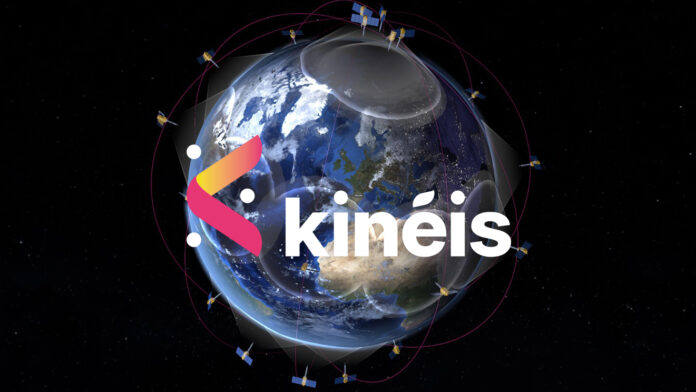France-based satellite IoT startup Kinéis is to launch five nanosatellites from a launchpad in New Zealand on June 18, with another 20 to follow within eight months. The firm wants its new satellite constellation to provide global IoT connectivity for remote applications in the logistics industry, mainly. The launch next week is its first since it was spun-off from the French Space Agency (CNES) in 2018 with a mission to “democratise” satellite monitoring for the IoT market. It comes four years after it raised €100 million in funding for that purpose.
Since 2018, it has been in charge of the ARGOS satellite monitoring system, started in 1978 as a collaboration between CNES and the US National Oceanic and Atmospheric Administration (NOAA), with support also from NASA. The ARGOS system had been managed previously by CNES-subsidiary CLS (Collecte, Localisation, Satellites), before CNES and CLS created Kinéis. It comprises seven satellites in low-earth orbit (LEO). Kinéis has said previously a constellation of 30 satellites will be enough to provide “near real-time connectivity”.
It has said it will launch 25 new satellites in five batches of five, over eight months through early 2025. After the first launch on June 18, three further launches are scheduled for before the end of 2024; a final launch will take place in the first quarter of 2025. Each satellite weighs 30 kilograms, and is set to operate in low-earth orbit at an altitude of 650 kilometres. Preliminary tests will be carried out through the end of 2024; Kineis wants a commercial service in 2025, it said.
The company will operate the constellation from 20 ground stations, it said. The June 18 launch, from the Māhia Peninsula on the east coast of New Zealand’s North Island, will be handled by New Zealand-based (US-owned) Rocket Lab, which has been launching satellites on its Electron vehicle since 2017; the first Kinéis launch will be its 50th launch. Kinéis is the sole passenger on the launch. The new nanosatellites will be positioned on five specific orbital planes, said the company. Kinéis called it a “first for the new French space sector”.
The June 18 launch will be broadcast live, here. The Rocket Lab mission Control Centre is located in Auckland, 500 kilometres from the launch base. Toulouse-based Kinéis has “subsidiaries” in the US, Brazil, and Singapore. It set up in Maryland, in the US, in 2022; the company has approval from the Federal Communications Commission (FCC) to operate in the US market. In May, it announced a deal with Semtech to offer native satellite support in the California firm’s LR1110 and LR1120 LoRa Edge chips – “without the need for any additional hardware”.
It also has a legacy deal with Sigfox owner Unabiz. The company lists a range of customer sectors: transportation and logistics, oil and gas, agriculture, environmental monitoring, and energy and utilities. A statement said: “Kinéis’ mission is to… transmit useful data to users, in near real time, from any point on the globe… By the end of the year, Kineis… will be playing a key role in a more sustainable future. A simple technology, responding to the challenges of a low-cost economy thanks to 25 nanosatellites and a global network of 20 ground stations. [It offers] low-cost, easy-to-install, near-real-time connectivity for fixed objects, mobile objects, and animals.”
Alexandre Tisserant, chairman at Kinéis, said: “Kinéis is proud and confident to entrust the deployment of its IoT constellation to Rocket Lab. The Electron launcher meets our technical requirements for positioning the five nanosatellites for each of our five launches. Kinéis is leading the IoT revolution thanks to its space connectivity, which will enable any object to be connected anywhere in the world.”
Peter Beck, chief executive at Rocket Lab, said: “We’re excited to launch Kinéis on the first of five dedicated Electron launches. Electron is perfectly suited to deploying constellations as we can deliver spacecraft to multiple orbital planes across multiple missions, and we’re proud to make this possible for the team at Kinéis.”

